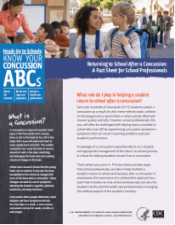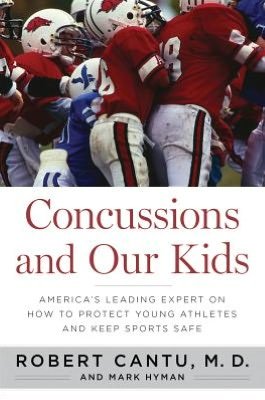Football-related catastrophic injuries on the rise
- Created on Tuesday, 17 April 2012 08:33
- Last Updated on 07.12.2012
- Published Date

Catastrophic brain injuries associated with full-contact football appear to be rising, especially among high school students, according to a new report.
The increase is alarming and indicates more coaches and athletic trainers should change how they teach the fundamental skills of the game, according to researchers based at the University of North Carolina at Chapel Hill.
Until recently, the number of football-related brain injuries with permanent disability in high school had remained in the single digits since 1984. However, the tally rose to 10 injuries in 2008 and 2009, and there were 13 in 2011, according to the latest catastrophic football injury research annual report from the UNC-based National Center for Catastrophic Sports Injury Research.
“These 2011 numbers are the highest since we began collecting catastrophic brain injury data,” said Fred Mueller, Ph.D., the report’s lead author, director of the center and professor emeritus of exercise and sports science in the College of Arts and Sciences. “This is a major problem.”
About 4.2 million football players compete nationwide, including 1.1 million high schoolers.
The center has collected data and published annual reports on catastrophic football injuries, including fatalities, disabilities and serious injuries, for 48 years. The National Collegiate Athletic Association, National Federation of State High School Associations and the American Football Coaches Association fund the research.
The center’s work is believed to be directly responsible for nearly eliminating football fatalities, as well as drastically reducing the number of cervical cord injuries to single digits, between the late 1960s and the early 1990s.
Since 1977, about 67 percent of football-related catastrophic injuries have been suffered by players as they made tackles. Mueller said part of the problem is that despite being prohibited in 1976, head-to-head contact – such as butt-blocking, face tackling or spearing tackles – is still occurring. These strategies make the head the initial and primary contact point with an opposing player, and often lead to cervical spine fractures or permanent brain injuries.
Some players recover fully after surgery and rehabilitation following injuries. However, many only recover partially, living with paralysis or mental deficiency, relying on intensive lifetime medical care. Since 1984, there have been 488 cervical cord and cerebral injuries with incomplete recovery, including 164 brain injuries, of which 148 were among high schoolers. Additionally, the years between 2001 to 2010 saw a 25 percent jump in football-related disability brain injuries over the previous decade, increasing to 66 from 52 incidents among all types of players.
Other potential reasons for the apparent increase in brain injuries may be because of heightened awareness of the issue. Also, this year’s report updated the number of football participants. However, Mueller noted that neither of these factors likely influenced the overall figures, since the report’s definition of catastrophic injuries (defined as injuries that resulted in brain or spinal cord injury or skull or spine fracture, which involved some disability at the time of the accident) and data collection methods have remained unchanged.
Mueller said reversing the trend required several changes, which some in the football community are already implementing. Coaches must be well versed in the signs and symptoms of concussions, such as headaches, dizziness, nausea and light sensitivity, and pull players from games if they exhibit those indicators. Players should not return to play until cleared by a physician. Teams also should hold pre-season meetings to discuss concussions, conduct medical evaluations of all players and emphasize that the head should not be used in tackling or blocking.
The report’s recommendations also note that schools should hire coaches who teach proper fundamental skills, and retain athletic trainers certified by the National Athletic Trainers’ Association. Referees must be vigilant about throwing flags when they see illegal tackles and parents also must be involved in meetings and discussions about concussions.
“All of these measures are important if we want to cohttps://to make a positive impact on the game,” he sahttps:// have to continue research in this area. Accurate data not only indicate problem spots, but they also help us offer appropriate precautions and reveal the adequacy of our preventive measures.”
The report’s co-ahttps://s Dr. Robert C. Cantu, chair of surgery and chief of neurological service at Emerson Hospital in Concord, Mass.
Report webpage (PDF file): https://www.unc.edu/depts/nccsi/FBCATReport2011.pdf
Source: University of North Carolina at Chapel Hill
Questions/comments? contact Jean Rickerson at This email address is being protected from spambots. You need JavaScript enabled to view it.
Brain Health
Boston, MA--It has been known for years that eating too many foods containing “bad” fats, such as saturated fats or trans fats, isn’t healthy for your heart. However, according to new research from ...
read more...-
CT scans may increase brain cancer risk
Children and young adults scanned multiple times by computed tomography (CT), a commonly used dia...
-
Physical activity boosts learning
INDIANAPOLIS – School administrators looking to restructure the academic schedule should consid...
-
Concussions and kids: warning signs (video)
Dr. Kevin Walter from the Concussion Clinic at Children's Hospital of Wisconsin discusse...




Neuroscience
Athens, Ga.- University of Georgia researchers have developed a map of the human brain that shows great promise as a new guide to the inner workings of the body's most complex and critical organ.
...
read more...-
Does CTE infect neuron to neuron?
NFL Hall of Famer "Iron Mike" Webster's life ended in 2002 when he suffered a heart attack at age...
-
Progesterone seems to protect neurons after injury
It is not yet known why girls suffer concussions at a higher rate than boys. The most prevalent...
-
Amino acids may restore concussion's chemical imbalance
Concussions are often called the "invisible" injury because they are usually not detectable by t...
Resources
- School professionals play an important role in the health of all students. Recognizing the signs and symptoms of concussion is important, as is managing their return to school ...
- https://
- CDC's Concussion Training for Clinicians
-
Concussion Education Video Programs - Free and Easy
Parents, athletes, coaches and medical professionals have access to concussion education created...
-
New concussion guidelines for team physicians
INDIANAPOLIS – Team physicians who assess and treat athletes suspected of concussion have new ...
Surprising concussion myths and facts
Chris Hummel Clinical Associate Professor, Department of Exercise and Sport Sciences, Ithaca College
quick links
Latest News
Concussions Occur...
...in Any Sport
REMOVE athlete from play
REFER to medical provider
REST no sports, no texting/TV
RETURN only with doctor's OK
Source: Children's Hospital Boston, Sports Concussion Clinic
































